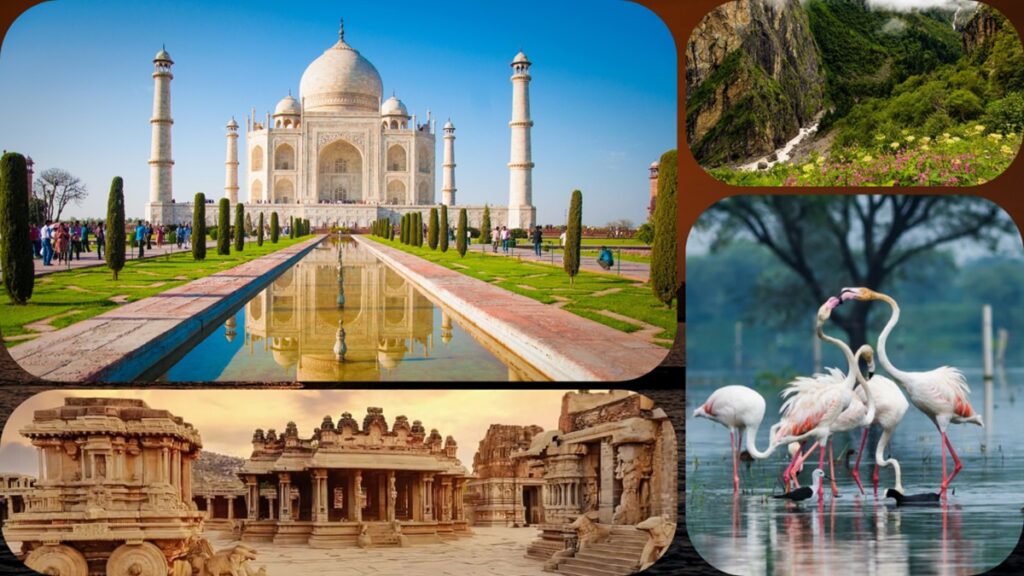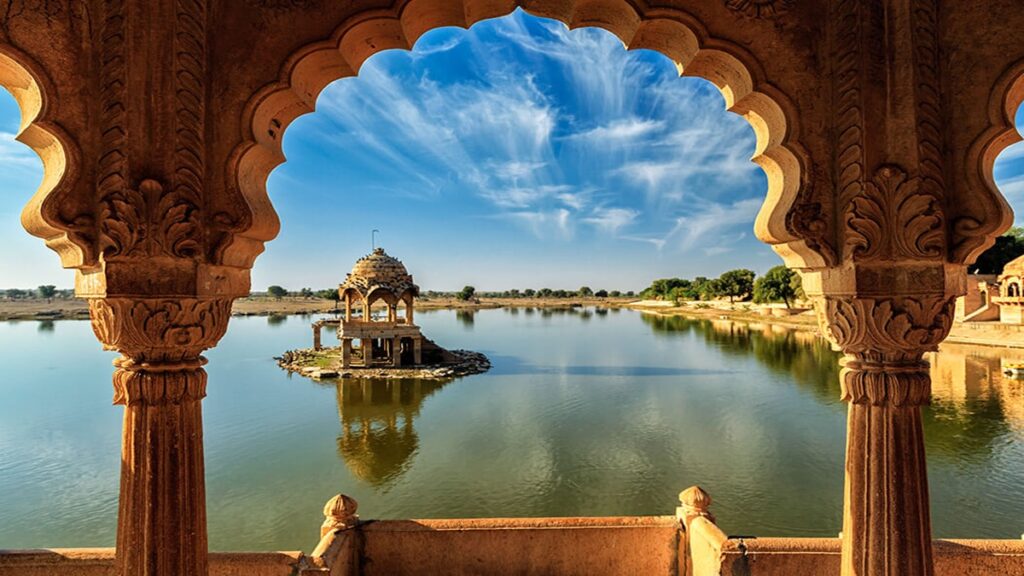Beneath India’s vibrant temples and massive forts exist ancient sanctuaries in the form of cave temples, carved from rock faces and hillsides. Ancient Indian cave temples are more than mere stone masterpieces; they are unassuming narrators of spiritual fidelity, royal patronage, and extraordinary creativity. If you’ve ever wondered where India’s architectural heritage meets mysticism, these rock-cut wonders are the perfect place to begin.
Origins of Indian Cave Architecture
The tradition of constructing cave temples in India goes back more than two thousand years. In the beginning, caves acted solely as a shelter for asceticism and monks, especially in terms of Buddhist monastic traditions. Later, caves turned into grand temples with ornate carvings and paintings.

The earliest cave temples, like those in Barabar Hills (Bihar), appeared during the Mauryan Empire (3rd century BCE), with early illustrations of rock-cut architecture in India. Through the centuries, different dynasties—Satavahanas, Chalukyas, Rashtrakutas, and Pallavas—developed the technique of carving entire temples out of living rock.
Ajanta and Ellora – Maharashtra’s Masterpieces
If there is one name that goes hand in hand with Indian cave temples, it is Ajanta and Ellora Caves. Situated in Maharashtra, these UNESCO World Heritage Sites welcome tourists from all over the world.
Ajanta Caves:
Dating back to the 2nd century BCE, the Ajanta Caves contain intricate murals and sculptures illustrating the life of the Buddha and Jataka stories. World-renowned for their finesse and narrative, they also contain beautifully sculpted statues of the Buddha and others. They are excellent examples of rock-cut architecture, adorned with elaborate pillars, intricately cut doorways, and large halls.
Ellora Caves:
Only a few hours’ drive away lies Ellora, which has 34 caves embodying Buddhist, Hindu, and Jain philosophies. Among them rises the architectural wonder—the Kailasa Temple, completely sculpted from a single rock. One of the world’s largest monolithic cave temples, it’s a veritable testament to the artistry and spirituality of ancient India.
Badami, Aihole, and Pattadakal – Chalukyan Legacy
In Karnataka, the Chalukya dynasty had left behind a magnificent trio—Badami, Aihole, and Pattadakal—also referred to as the cradle of Indian temples.
Badami Cave Temples
Cut into the soft Badami sandstone cliffs, the Badami caves are from the 6th century and contain both Hindu and Jain influences. The temples reflect a mix of Dravidian and Northern Indian architecture, a testament to the cultural exchange of the time. Admired for their bold artwork, they contain elaborate carvings of gods such as Nataraja, Vishnu, Harihara, and Ardhanarishwar, and Jain deities such as Lord Mahavira. The caves underscore the religious diversity of the region, with Cave 1 being dedicated to Shiva and Cave 4 to Jain Tirthankaras, making them a vivid testament to the mythological and spiritual narrative in stone.
Pattadakal
A blend of North and South Indian architectural styles, the temples at Pattadakal represent a crucial stage in the development of temple architecture and laid the foundations for modern Dravidian architecture. Pattadakal, meaning “coronation stone,” served as a site for the royal allegiances and coronation rituals of the Chalukya dynasty. The site has many ancient Hindu and Jain temples, including the well-known Virupaksha and Mallikarjuna Temples, which exemplify the Chalukyan style with ornamental carvings and sculptures typical of the sculptural projects from the religious and artistic periods during the time.
Elephanta Caves – Shiva’s Grand Abode
The Elephanta Caves, located on an island outside of Mumbai, are dedicated to Lord Shiva and date back to the 5th to 8th century CE. The highlight of the caves is the Trimurti sculpture, a large 3-headed depiction of Shiva, who symbolizes creation, preservation, and destruction. The main cave is also home to enormous sculptures, such as the most recognized Maheshamurti (Shiva as Lord of Dance).

A UNESCO listing, the caves depict the iconography of Hinduism and are a leading destination for heritage tourism in India.
Lesser-Known Cave Temples Worth Discovering
While Ajanta and Ellora often steal the spotlight, India hides numerous hidden gem cave temples waiting to be explored.
Udayagiri and Khandagiri Caves (Odisha): These caves were carved under King Kharavela in the second century BCE and served the purpose of lodging for Jain monks. The caves contain the Hathigumpha in Udayagiri, the inscriptions give an account of the reign and military campaigns of Kharavela. The caves portray well-crafted reliefs and sculptures around the Jain themes, indicative of the significance of religious and artistic expression.
Undavalli Caves (Andhra Pradesh): Dating between the 4th-5th centuries CE, these monolithic caves are located near Vijayawada and display a combination of Hindu, Jain, and Buddhist aspects. The caves are four stories; home to a gigantic reclining Vishnu sculpture carved from one block of granite. Originally, Jain, the caves changed into a Buddhist monastery and are now enduring examples of rock-cut architecture from the Gupta dynasty.
Karla and Bhaja Caves (Maharashtra): Karla and Bhaja are among the oldest Buddhist rock-cut caves in India, dating back to the 2nd century BCE. They were located on ancient trade routes that provided places for monks, as well as travelers, to stop and rest. Karla has an impressive chaitya hall that replicates wooden architecture. Bhaja is known for its group of 22 caves, along with many stupas.
Barabar Caves (Bihar): The Barabar Caves are the oldest surviving rock-cut caves in India, dating from the 3rd century BCE, and were commissioned by Emperor Ashoka for the Ajivika sect. The caves are remarkable in their smooth granite interiors and apparent architectural precision. Most of the caves, including Sudama and Lomas Rishi, represent advanced engineering, and subsequently inspired rock-cut architecture throughout India.
Symbolism and Spiritual Significance
Indian temple caves were more than places to worship—they served as havens for spiritual refuge, meditation, and connection with the cosmos. The carvings and layouts often followed mandala principles, orienting to cardinal direction and celestial harmony.
Some cave acoustics, such as at Karla, are known to resonate sound from chants and prayers. All sculptures, ranging from dancing Shiva to meditating Buddhas, express layers of symbolized meaning anchored in dharma and moksha.
India’s Eternal Echo in Stone
From the Ajanta frescoes to the Ellora monoliths, India’s cave temples are not mere historic artifacts—they are living witnesses to faith, creativity, and survival. They tell us of an era when piety wasn’t constructed—it was sculpted.
As you stroll along these stone passageways of time, you don’t merely witness the past—you experience it. So, if you’re a wanderer, a history lover, or a seeker of the spirit, the cave temples of India welcome you to explore a world where history is inscribed in stone and soul.




